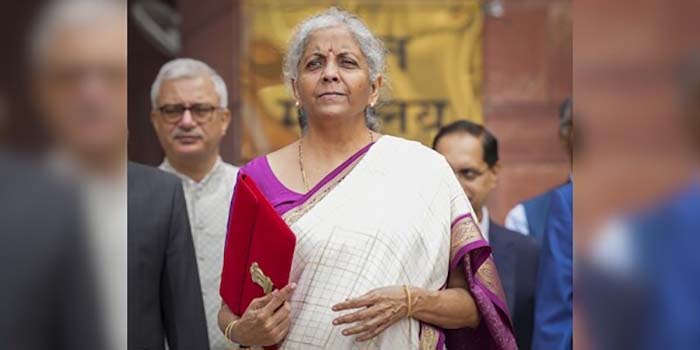NE BUSINESS BUREAU
CHENNAI/AHMEDABAD, FEB 4
Union Finance Minister Nirmala Sitharaman has just delivered her landmark 8th Union Budget on Saturday, ushering significant tax reliefs for India’s middle-class to boost consumption. Modi 3.0 has taken into account the farmers, start-ups, youth, education and skill upskilling. However, she has prepared well to tackle the slowing down of the economy, and the global uncertainty.
According to the industry captains, the budget mainly focused on three key pillars of Vikshit Bharat – democracy, demography and demand.
The Union Budget focused on economic expansion, infrastructure development, MSMEs, futuristic cities, and middle-class welfare and brings substantial relief for the middle class. It also aims to stimulate rural consumption – an essential step toward unlocking India’s economic potential.
Here are some of the excerpts:

‘Boost consumption to revive demand, yet remain fiscally responsible en route to Viksit Bharat’
GP Hinduja, Chairman, Hinduja Group, said: “The middle-class gets a significant tax relief after a decade to boost consumption and eventually revive demand is the Brahmastra FM has fired. Kudos to her for doing so while remaining fiscally responsible by targeting a fiscal deficit of 4.4%. A special focus has been on human-intensive sectors that will generate employment. FDI limit to 100% in Insurance and special impetus to the Renewables, including energy storage systems, are clear positives. It would have helped if the EV charging infrastructure could have been given an industry status. Maintaining Capex levels while lowering taxation is huge but needs more details. With all these moves, the government remains laser-focused on Viksit Bharat by 2047″.

Projected rebound in GDP growth to the 7%-8% range may not materialize until FY 2026-27
Karan Aggarwal, Co-Founder & Chief Investment Officer at Elever, said:
Budget 2025-26: Steering through a slowing economy
Markets will likely welcome the fact that the government has refrained from altering LTCG/STCG taxes, introducing new populist schemes, or deviating from its fiscal discipline, with a better-than-expected fiscal deficit target of 4.4% for FY 2025-26.
The downside: A shift from capex to consumption
However, with the economy slowing and a strong fiscal position, government was expected to maintain its focus on elevated capex and manufacturing, while also adding private consumption to the mix. Instead, the budget indicates a shift in priorities. There was a surprising 8% downward revision of FY 2025 capex, with a lower-than-expected INR 11.2 lakh crore allocation for FY 2026. Additionally, the absence of new incentives or sops for export-oriented manufacturing is a significant negative for sectors such as PSUs, manufacturing, metals, and industrials—key drivers of growth over the last few years.
For now, the ambitious target of $1 trillion in manufacturing exports by 2028 appears to have been pushed back for at least a year, likely due to ongoing global trade challenges, tariff wars, and geopolitical risks.
Big Picture: A cautious approach amid global uncertainty
On a broader scale, the budget reflects the government’s concerns over the global geopolitical and geoeconomic risks expected to unfold in FY 2026. Alongside an anticipated RBI rate cut in the near future, the tax relief measures seem to be a strategy aimed at insulating the Indian economy from external shocks by increasing the share of private consumption in the growth equation. These steps are expected to provide much-needed support to corporate earnings in the near term.
That said, the projected rebound in GDP growth to the 7%-8% range may not materialize until FY 2026-27. The government appears to be positioning itself with substantial ‘cash’ reserves, ready to optimally manage any economic downturn in the coming quarters. As is often the case with holding cash, while short-term returns may be sacrificed, this strategy could pay off if a market crisis presents a buying opportunity.

FM demonstrates a strong commitment to fostering India’s startup ecosystem
Umesh Uttamchandani, MD, DevX, said:
“The Union Budget 2025 demonstrates a strong commitment to fostering India’s startup ecosystem and urban infrastructure development. The extension of the startup incorporation benefits by five years showcases the government’s continued support for entrepreneurial growth. The introduction of the Urban Challenge Fund with ₹1 lakh crore allocation for ‘Cities as Growth Hubs’ and ‘Creative Redevelopment of Cities’ presents exciting opportunities for the managed office space sector.
At DevX, we are particularly encouraged by the government’s focus on developing tier 2 cities through the National Framework for GCC (Global Capability Centres). As a provider of modern workspace solutions, we see this as an opportunity to expand our footprint and support the growing demand for flexible, technology-enabled office spaces across emerging business hubs. The establishment of a Centre of Excellence for AI in education, with a ₹500 crore outlay, is a significant step towards developing a future-ready workforce. This investment in AI talent development will be crucial for businesses alike as we continue to integrate cutting-edge technologies into our workspaces and services.”

Budget overall remains strong and growth-oriented
Anuj Puri, Chairman – ANAROCK Group, said:
“The Union Budget focused on economic expansion, infrastructure development, MSMEs, futuristic cities, and middle-class welfare and brings substantial relief for the middle class. It also aims to stimulate rural consumption – an essential step toward unlocking India’s economic potential.
From a real estate perspective, the budget delivers both direct and indirect benefits, acting as a catalyst for growth. However, a notable shortfall was the absence of major announcements for the affordable housing sector, leaving stakeholders disappointed.
Despite this, the budget overall remains strong and growth-oriented, with a clear focus on economic development and enhanced consumption.”

Presented a pragmatic roadmap that builds a robust foundation for a ‘Viksit Bharat 2047’
Avantika Gupta, CEO, OPG Power Ventures said:
“The Government has presented a pragmatic roadmap that builds a robust foundation for a ‘Viksit Bharat 2047’ while also deploying stringent guardrails to ensure a low carbon output.
The emphasis on fortifying India’s energy security while also realizing committed decarbonisation goals, shall accelerate India’s sustainable growth paradigm in the decades to come.
Focus on innovation, and strengthening domestic manufacturing in critical areas such as grid-scale batteries, electrolysers, solar cells, wind turbines, and nuclear power will be instrumental in shaping India’s energy future. The establishment of five National Centres for Excellence in skilling, incentives for electricity distribution reforms, and strategic amendments to the Atomic Energy Act will further enable a robust, self-reliant energy ecosystem.
By incentivizing states to drive reforms and expanding intrastate transmission capacity, we are moving toward a stronger, more efficient power sector. The additional borrowing allowance for states committed to these reforms reflects the government’s dedication to long-term stability and sustainability. These measures shall strengthen the financial health of power companies and pave the way for a resilient energy infrastructure that supports economic growth and industrial expansion across the country.
The launch of the Nuclear Energy Mission, with a ₹20,000 crore outlay for Small Modular Reactors, and the vision to develop 100 GW of nuclear power by 2047, marks a transformative step towards clean energy transition. Additionally, the exemption of critical minerals like cobalt, lithium-ion battery waste, and zinc from basic customs duty will enhance domestic supply chains and accelerate India’s energy security.”









